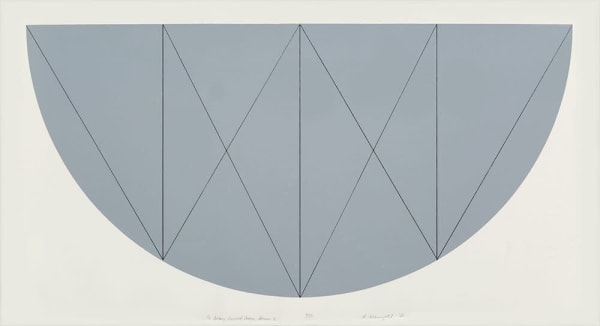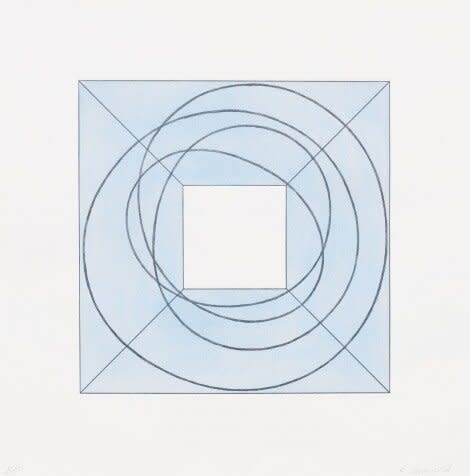Robert Mangold American, b. 1937
Robert Mangold was born in North Tonawanda, New York and spent his youth in Buffalo. In 1956 he enrolled in the illustration department of the Cleveland Institute of Art. Within a year, he had transferred to the fine-arts division of the school in order to pursue an education in painting, sculpture, and drawing. While studying at the institute in 1957 Mangold traveled to see the Carnegie International in Pittsburgh, where he gained exposure to the work of a wide variety of Abstract Expressionist painters including Willem de Kooning, Adolph Gottlieb, Franz Kline, and Jackson Pollock. Subsequently, Mangold’s painting reflected an interest in Abstract Expressionism as well as in the work of Alberto Burri and Antonio Tàpies. He began producing large-scale abstract paintings, moving away from an earlier interest in naturalism.
By 1964 Mangold had moved into his signature Minimalist painting style, and in 1968 he began employing acrylic instead of oil paint, rolling rather than spraying it on Masonite or plywood grounds. Within the year, he moved from these more industrially-oriented supports to canvas. He received a fellowship from the John Simon Guggenheim Memorial Foundation in 1969, with which he and Plimack built a home in the Catskills. They lived there through the mid-1970s, at which time they moved to Washingtonville, New York, where they still reside.
Mangold became affiliated with John Weber Gallery in 1972, with Paula Cooper Gallery in 1984, and with Pace Gallery in 1991. Major museum exhibitions of his work have been held at the Solomon R. Guggenheim Museum in New York (1971), the Museum of Contemporary Art in San Diego (1974), the Stedelijk Museum in Amsterdam (1982), Hallen für Neue Kunst in Schaffhausen (1993), and Musée D’Orsay in Paris (2006). His recent series — which utilize elemental forms like the column and ring and employ his characteristic economy of color, gesture, and shape — are featured frequently at Pace Wildenstein in New York, as well as other international galleries.






